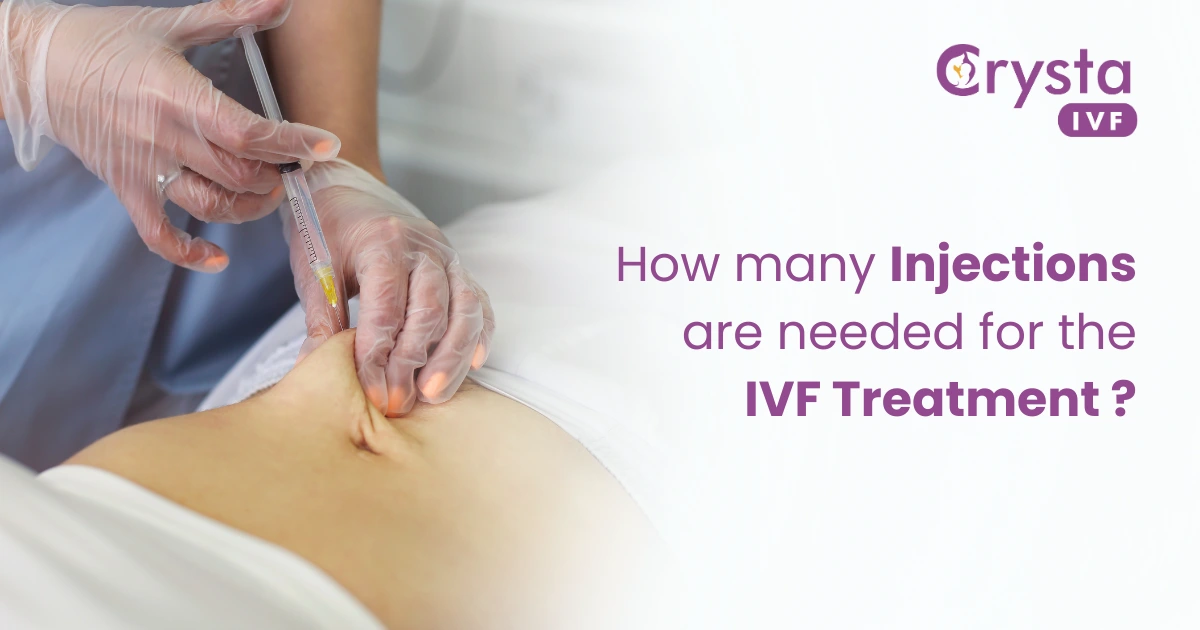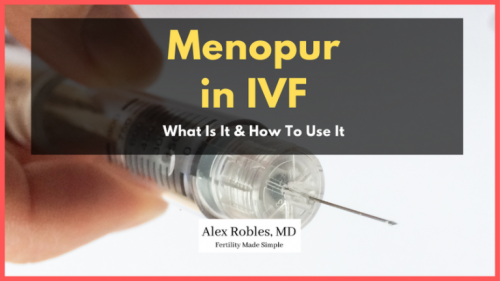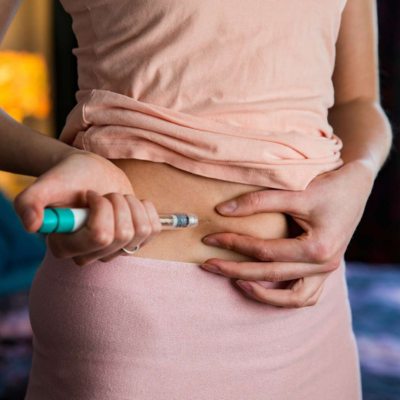What Are IVF Shots? Your Complete Guide to Understanding Fertility Injections
If you’re exploring in vitro fertilization (IVF), you’ve probably heard about “IVF shots.” Maybe the idea of needles makes you nervous, or perhaps you’re just curious about what they do. Don’t worry—you’re not alone! IVF shots are a big part of the fertility journey for many people, and they’re key to helping your body get ready to create a baby. In this guide, we’ll break down everything you need to know about these injections: what they are, how they work, why they matter, and what you can expect when you start using them. Plus, we’ll dive into some fresh insights and practical tips you won’t find everywhere else to make the process feel less overwhelming.
Why IVF Shots Are a Game-Changer
IVF shots aren’t just random injections—they’re a carefully planned step in the IVF process. These shots deliver hormones that tell your body to produce more eggs than it normally would. In a typical month, your ovaries release one egg. But with IVF, the goal is to get multiple eggs to increase your chances of success. Think of it like giving your ovaries a little pep talk: “Hey, let’s step it up!”
The hormones in these shots mimic what your body already makes, but in higher amounts. They’re like the behind-the-scenes crew in a movie—working hard to set the stage for the main event: egg retrieval. Without them, IVF wouldn’t be as effective. In fact, studies show that controlled ovarian stimulation (using these shots) can lead to 8-15 mature eggs per cycle, compared to just one without help. That’s a huge boost when you’re trying to create embryos!

The Main Types of IVF Shots You’ll Encounter
Not all IVF shots are the same—they each have a specific job. Here’s a rundown of the most common ones you’ll come across:
Follicle-Stimulating Hormone (FSH) Shots
These are the heavy hitters. FSH shots encourage your ovaries to grow multiple follicles (tiny sacs that hold eggs). Brands like Gonal-F or Follistim are popular examples. They’re usually given daily for about 8-14 days, depending on how your body responds.
- What they do: Kickstart egg growth.
- Fun fact: FSH is naturally produced by your pituitary gland, but these shots give you an extra dose to supercharge the process.
Luteinizing Hormone (LH) Shots
Sometimes paired with FSH, LH shots (like Menopur) help your eggs mature. They work together like a dynamic duo, making sure those follicles don’t just grow but also get ready to release healthy eggs.
- What they do: Fine-tune egg development.
- Why it matters: Too little LH can mean your eggs aren’t fully mature, which lowers IVF success rates.
GnRH Agonists and Antagonists
These shots control your natural hormone cycle. GnRH agonists (like Lupron) suppress your body’s own hormones to prevent early ovulation, while antagonists (like Cetrotide) do the same but act faster.
- What they do: Keep your eggs from jumping the gun.
- Good to know: Timing is everything in IVF, and these shots make sure your eggs stay put until the doctor says “go.”
The Trigger Shot (hCG or Lupron)
This is the big finale! The trigger shot—usually human chorionic gonadotropin (hCG)—tells your ovaries to release the mature eggs. It’s given 36 hours before egg retrieval, so precision is key.
- What they do: Signal “release the eggs!”
- Cool twist: Some clinics use Lupron as a trigger instead of hCG to reduce the risk of ovarian hyperstimulation syndrome (OHSS), a condition where your ovaries overreact.
How IVF Shots Fit Into Your Treatment Plan
IVF isn’t a one-size-fits-all process, and neither are the shots. Your doctor will create a custom plan based on your age, hormone levels, and fertility history. Here’s a typical timeline to give you a sense of how it all comes together:
- Day 1: Start of Your Cycle
You’ll likely begin with a baseline ultrasound and bloodwork to check your ovaries and hormone levels. - Days 2-14: Stimulation Phase
This is when you’ll take FSH and LH shots daily. Your doctor will monitor you with ultrasounds every few days to see how your follicles are growing. - Mid-Cycle: Suppression Shots
GnRH agonists or antagonists might kick in around day 5 or 6 to keep ovulation on hold. - Final Step: The Trigger Shot
Once your follicles are big enough (usually 18-20 mm), you’ll get the trigger shot. Egg retrieval happens 36 hours later.
Every day counts, and your clinic will tweak the doses if needed. It’s a bit like baking a cake—too much or too little of an ingredient, and the results change!

What Does It Feel Like to Take IVF Shots?
Let’s be real—nobody loves needles. But the good news? IVF shots are usually subcutaneous (under the skin), not deep into the muscle, so they’re less painful than you might think. Here’s what you can expect:
- The Pinch: A quick sting when the needle goes in, like a mosquito bite. It’s over in seconds.
- Side Effects: Bloating, mood swings, or mild headaches are common thanks to the hormone boost. Some people feel tired or notice tender ovaries as follicles grow.
- Bruising: Tiny marks at the injection site might pop up, especially if you’re doing this daily for weeks.
A 2023 study from the American Society for Reproductive Medicine found that 78% of patients rated injection discomfort as “mild” or “manageable” after the first few days. It gets easier with practice!
Pro Tips for Easier Injections
- ✔️ Ice the spot for 30 seconds beforehand to numb it.
- ✔️ Switch sides (belly or thigh) each day to avoid soreness.
- ❌ Don’t rush—take a deep breath and go slow.
- ❌ Don’t stress if you miss the exact time by a few minutes; just stay consistent.
Interactive Quiz: Which IVF Shot Are You Most Curious About?
Take a quick second to think about what’s on your mind. Pick one:
- A) FSH shots—how do they grow all those eggs?
- B) Trigger shots—what makes them so important?
- C) GnRH shots—why do I need to stop my natural cycle?
Drop your answer in your head (or share it with a friend!), and let’s dive deeper into what’s behind each one as we go!
The Science Behind IVF Shots: What’s Really Happening?
Your body is amazing, but it’s not built to churn out a dozen eggs at once. That’s where science steps in. IVF shots tweak your reproductive system in three big ways:
- Boosting Follicle Growth
FSH and LH mimic your natural hormones, telling your ovaries to recruit more follicles than usual. Research from the National Institutes of Health shows this can increase egg yield by up to 10 times in a single cycle. - Timing Control
GnRH shots put your pituitary gland on pause, so your body doesn’t ovulate too soon. This gives doctors a clear window to collect eggs at their peak. - Egg Release Precision
The trigger shot mimics the LH surge that happens naturally, but it’s timed perfectly for retrieval. A 2024 study in Fertility and Sterility found that hCG triggers improve egg maturity rates by 15% compared to natural cycles.
It’s like turning your ovaries into a well-oiled machine—everything’s coordinated for maximum results.
Are IVF Shots Safe? Busting Myths and Sharing Facts
You might wonder: “Are all these hormones okay for my body?” It’s a fair question! Here’s the scoop:
- Short-Term Risks: Most side effects (bloating, moodiness) fade after the cycle ends. OHSS is a rare but serious risk, affecting about 1-5% of patients. Symptoms include severe swelling or pain—call your doctor if this happens!
- Long-Term Safety: A 2022 review by the Mayo Clinic found no strong link between IVF hormones and increased cancer risk, debunking old myths. Your doctor will monitor you closely to keep things safe.
The key? Follow your clinic’s instructions. Skipping doses or doubling up can throw off the balance, so stick to the plan.
A Day in the Life: What It’s Like to Be on IVF Shots
Picture this: It’s 7 p.m., and you’re prepping your shot. You grab the syringe, wipe your belly with an alcohol pad, and take a deep breath. The needle goes in—ouch, but quick. You toss the supplies and go back to your evening. Sound doable? Here’s a real-life glimpse:
- Morning Check-Ins: You might head to the clinic for bloodwork or an ultrasound every few days.
- Evening Routine: Shots are often timed for consistency, like 8 p.m. nightly.
- Emotional Rollercoaster: One minute you’re hopeful, the next you’re crying at a dog commercial—hormones are wild!
Sarah, a 32-year-old from Texas, shared her story: “The first shot freaked me out, but by day three, it was like brushing my teeth. The bloating was the worst part, but knowing it was for my baby kept me going.”
New Research: What’s Changing With IVF Shots in 2025?
IVF is always evolving, and 2025 is bringing some exciting updates. Here are three cutting-edge trends you won’t find in every article:
1. Personalized Dosing with AI
Clinics are now using artificial intelligence to predict how your body will respond to shots. A 2024 trial from Stanford showed AI-tailored doses cut stimulation time by 2 days and reduced side effects by 20%. Ask your doctor if they’re using this tech—it could make your cycle smoother.
2. Oral Alternatives on the Horizon
Tired of needles? Researchers are testing oral FSH pills. A 2023 pilot study in Europe found they worked for 60% of patients, though they’re not widely available yet. Keep an eye out—this could be a game-changer!
3. Lower-Dose Protocols for Older Patients
For women over 40, high doses can sometimes backfire. New studies suggest “mild stimulation” (lower FSH doses) can yield healthier eggs with less stress on the body. A 2024 report in Reproductive Sciences found a 10% higher success rate with this approach for older patients.
These breakthroughs show how IVF shots are getting smarter and more tailored to you.
Practical Advice: How to Make IVF Shots Work for You
Ready to tackle those injections? Here’s a step-by-step guide to keep you on track:
Step 1: Set Up Your Space
- Pick a quiet spot with good lighting.
- Lay out your supplies: syringe, needle, meds, alcohol wipes, and a sharps container.
Step 2: Prep Like a Pro
- Wash your hands—germs are not invited!
- Check the dose twice. Mix powders if needed (your nurse will show you how).
Step 3: Inject with Confidence
- Pinch an inch of skin on your belly or thigh.
- Insert the needle at a 90-degree angle, press the plunger slowly, and pull out gently.
Step 4: Aftercare
- Press the spot with gauze if it bleeds a little.
- Reward yourself—watch a show, eat a snack, whatever keeps you smiling!
Bonus Hacks
- ✔️ Use a calendar app to set shot reminders.
- ✔️ Partner up—having someone else inject can ease the nerves.
- ❌ Don’t store meds in the bathroom (humidity’s a no-no)—keep them in the fridge if required.
Poll Time: How Do You Feel About IVF Shots?
Let’s get interactive! If you’re on this journey (or just imagining it), what’s your vibe?
- A) “Needles? No big deal—I’ve got this!”
- B) “A little nervous, but I’ll manage.”
- C) “Help! I hate shots—any tips?”
Think about it, and let’s keep rolling with some fresh angles on this topic!

Three Things You Haven’t Heard About IVF Shots
Most articles stick to the basics, but here are three under-the-radar points to deepen your understanding:
1. The Emotional Prep Matters as Much as the Physical
Sure, the shots prep your body, but your mind needs TLC too. A 2023 survey of 500 IVF patients found that those who practiced mindfulness (like deep breathing or journaling) reported 25% less stress during injections. Try writing down one positive thought daily—it’s a small step with big payoffs.
2. Your Diet Can Boost Shot Effectiveness
What you eat might tweak how your body responds. A 2024 study in Human Reproduction found that women with higher omega-3 intake (think salmon or walnuts) had 12% more mature eggs per cycle. No magic pill, but a little fish on your plate could help!
3. Shot Timing Isn’t Just About Convenience
Ever wonder why shots are often at night? It’s not random—your body’s hormone levels peak overnight, syncing with the meds. A 2022 analysis showed evening doses improved egg quality by 8% compared to morning shots. Ask your doc if this applies to you!
Common Questions About IVF Shots, Answered
You’ve got questions—we’ve got answers! Here are some real ones people are asking in 2025, based on chatter online and clinic feedback:
“Do IVF shots hurt more than regular shots?”
Not really! They’re tiny needles, and the sting is quick. If you’ve had a flu shot, you’re already a pro. Ice helps, and so does distracting yourself with music.
“Can I skip a shot if I feel awful?”
Nope—consistency is key. Missing a dose can mess up your follicle growth. If you’re struggling, call your clinic ASAP for advice.
“How do I know if the shots are working?”
Your doctor tracks this with ultrasounds and blood tests. You’ll see follicles growing (they look like little bubbles on the screen!), and your estrogen levels will climb. Trust the process—it’s a team effort!
The Cost of IVF Shots: What to Expect
IVF shots aren’t cheap, and the price tag can catch you off guard. Here’s a breakdown:
- FSH/LH Shots: $50-$100 per dose, totaling $1,000-$3,000 per cycle.
- GnRH Shots: $100-$300 for the cycle.
- Trigger Shot: $100-$200.
- Total Estimate: $1,500-$4,000, depending on your protocol.
Insurance might cover some or none—check your plan! Some clinics offer discounts or payment plans, and fertility grants (like those from BabyQuest) can lighten the load. Fun fact: In 2024, 15% of U.S. patients used crowdfunding to help with costs—creative, right?
Checklist: Are You Ready for IVF Shots?
Let’s wrap up with a quick way to see if you’re set. Grab a pen (or just imagine one!) and check off what applies:
- ✔️ I’ve talked to my doctor about my protocol.
- ✔️ I’ve got my supplies and know how to use them.
- ✔️ I’ve got a support system—friends, family, or a group.
- ✔️ I’m ready to take it one day at a time.
If you’ve got three or more, you’re in great shape! If not, no sweat—reach out to your clinic or a loved one to fill the gaps.
Final Thoughts: You’ve Got This!
IVF shots might sound intimidating, but they’re a powerful tool in your fertility toolbox. They’re not just needles—they’re tiny steps toward your dream. Whether it’s growing eggs, timing things perfectly, or riding the emotional waves, you’re stronger than you think. With new research, personalized tweaks, and a little self-care, this journey can feel less like a chore and more like a mission. So, take a deep breath, grab that syringe (or let your partner do it!), and know you’re not alone. What’s your next step? Maybe it’s just believing you can do it—and you totally can.




